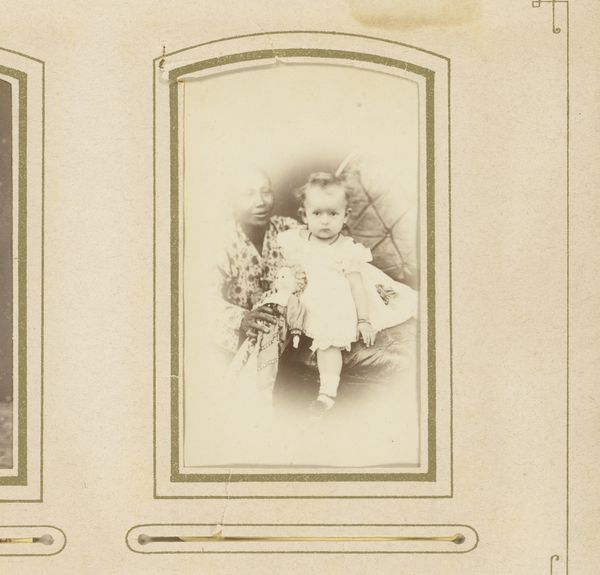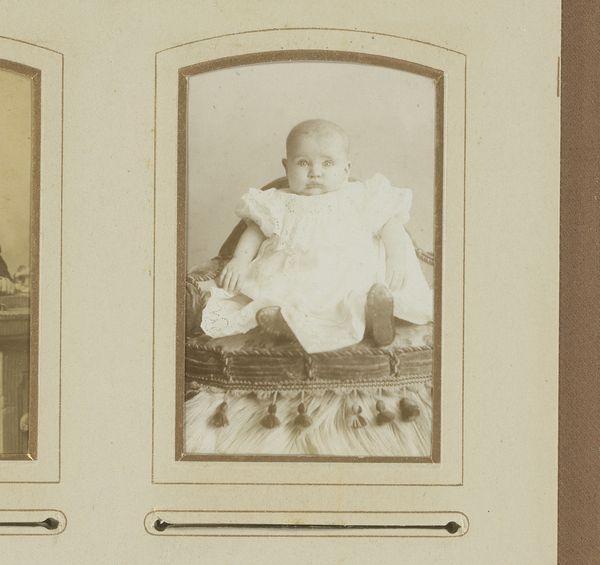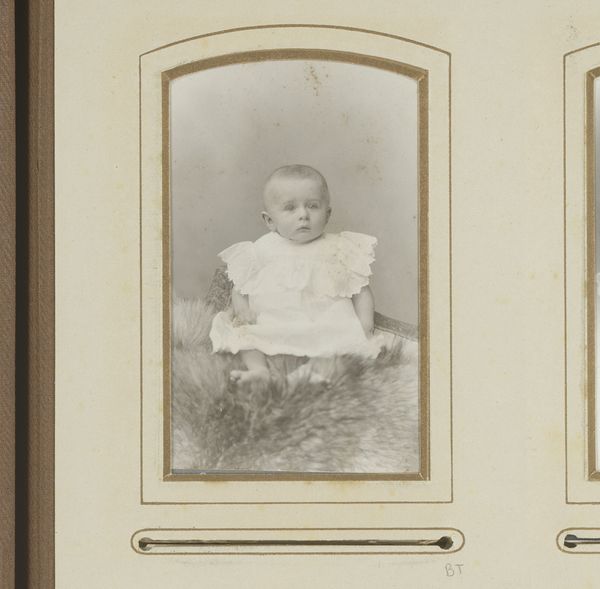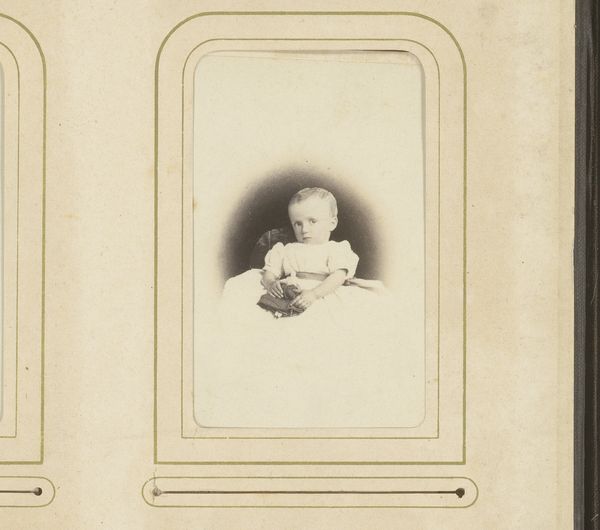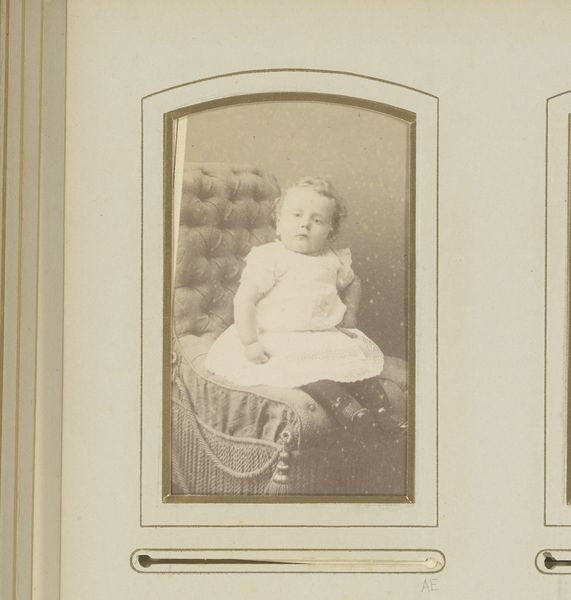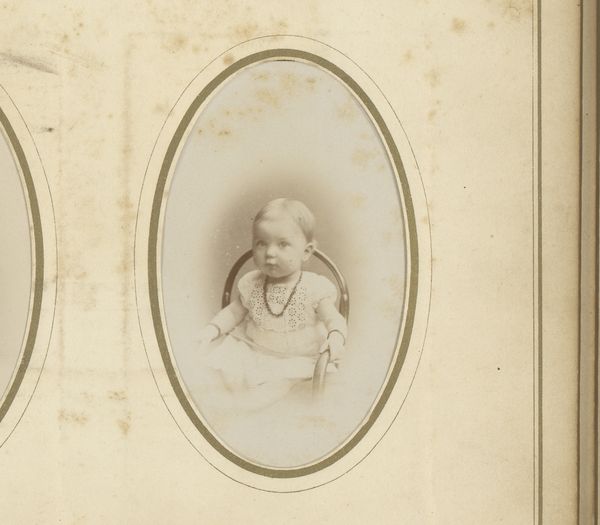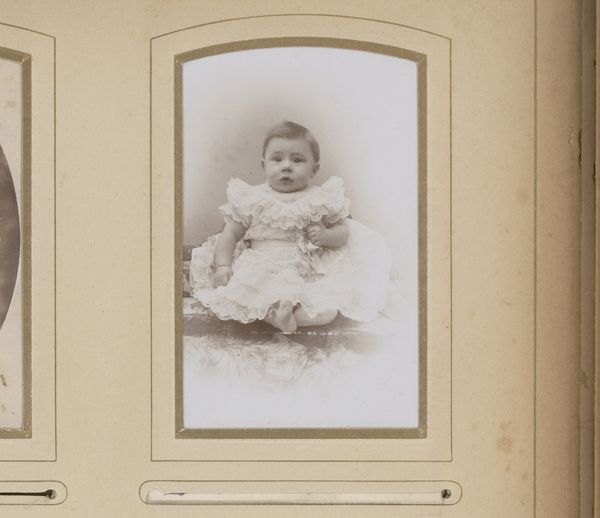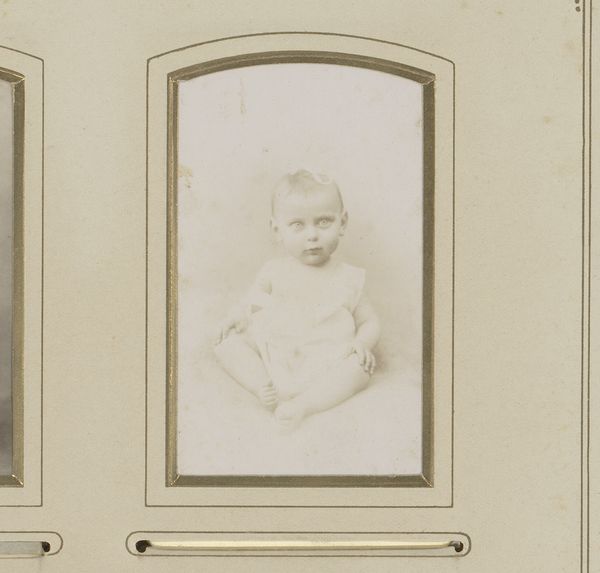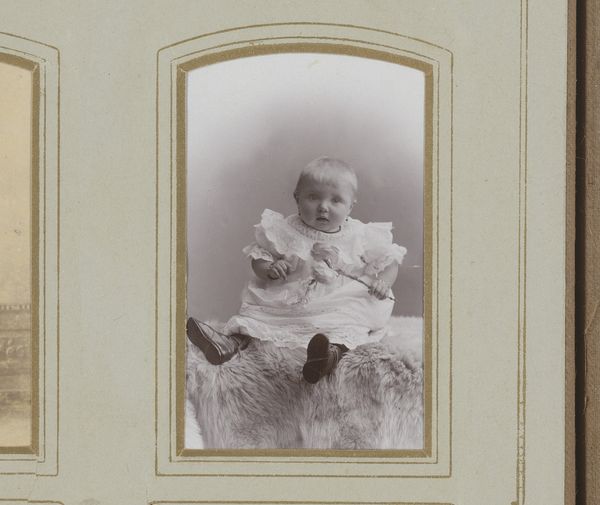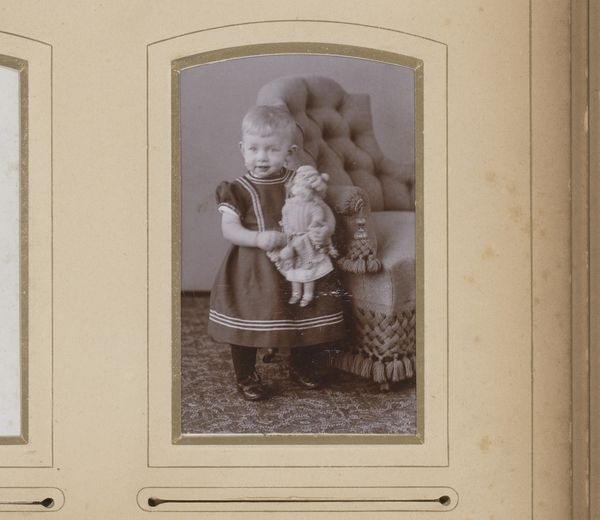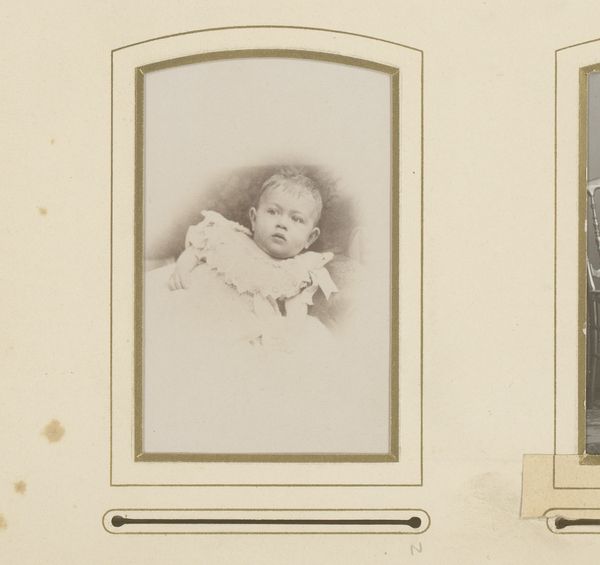
photography
#
portrait
#
aged paper
#
still-life-photography
#
toned paper
#
pictorialism
#
photography
#
genre-painting
Dimensions: height 81 mm, width 51 mm
Copyright: Rijks Museum: Open Domain
Curator: Here we have “Portret van een zittende baby,” or “Portrait of a Sitting Baby,” a photograph by Georges Halleux-Mertens, dated sometime between 1901 and 1912. Editor: The damage to the print lends an aura of mystery. What I find arresting is the soft, almost dreamlike quality despite its small scale. It feels both intimate and distant. Curator: Halleux-Mertens employed techniques characteristic of pictorialism, an artistic movement in photography that emphasized aesthetic beauty and often mimicked painting and etching. Note the tonality and manipulation of focus to achieve this effect. The aged paper enhances that soft, textured appearance. Editor: And that tonality immediately reads as belonging to the fin de siècle period of intense social and artistic transformation. There is an unsettling quality—that damage across the baby’s face… what happened to this photograph? Was it intentionally obscured, or simply forgotten, then recovered, carrying those wounds of time and history? It prompts questions about memory, loss, and the precariousness of childhood. Curator: The composition, with the baby positioned centrally and framed by what looks like an elaborate mount, draws our eye directly to the subject. The pose, though simple, conveys a certain formal elegance—a far cry from a snapshot, wouldn't you say? Editor: Formal yes, and stilted—and I immediately wonder: for whom was this portrait created? What was the intent of presenting the baby this way, on an elevated surface almost like a pedestal. The accessories on their chest also hint at broader cultural implications linked to ritual and performance that resonate within the social construction of childhood and family dynamics. Curator: Ultimately, Halleux-Mertens’ artistry transformed a seemingly ordinary subject into a work of aesthetic interest. Editor: And forces us to ask what histories might have faded and resurfaced within this deceptively delicate frame.
Comments
No comments
Be the first to comment and join the conversation on the ultimate creative platform.

